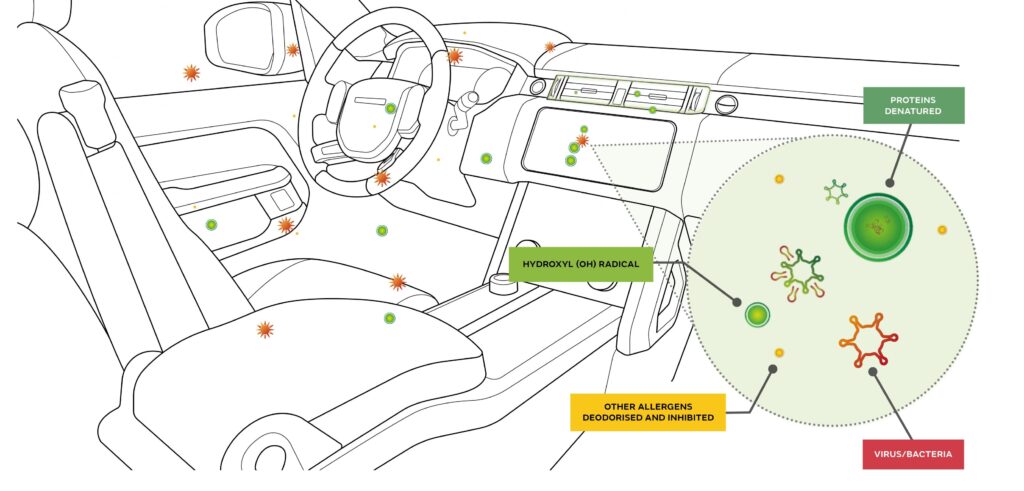Jaguar Land Rover has announced that after a series of laboratory tests, its future cabin air purification technology is capable of inhibiting airborne viruses and bacteria by up to 97%.
The vehicle’s prototype HVAC system will use Panasonic’s nanoe X technology to help prevent unwanted bacteria or viruses from entering the interior space.
Working in partnership with microbiology and virology lab Perfectus Biomed, JLR carried out a sealed-chamber test in which the vehicle’s ventilation system was simulated for 30 minutes. The results showed that 97% of viruses and bacteria were unable to enter the cabin. The nanoe X technology also went on to show its effectiveness against the SARS-CoV-2 coronavirus, proving to be 99.995% effective during a two-hour sealed test program.
“Our customers’ well-being is of paramount importance to us – and now, more than ever, we are all looking for technological solutions that can help take care of our loved ones,” said Steve Iley, Jaguar Land Rover’s chief medical officer. “The independent research, developed and commissioned by our expert engineers, is just one of the ways we are working to assure our customers that harmful pathogens are being minimized, providing a cleaner environment for passengers inside the cabin and setting new standards in the ownership experience.”
Panasonic’s revised air purification system is said to be 10 times more effective than its previous nanoe. Purification is achieved when high voltage is used to create trillions of hydroxyl (OH) radicals enveloped in nano-sized water molecules; these OH radicals then envelop the virus and prevent its growth.
Alexander Owen, research engineer at Jaguar Land Rover, explained, “This technology is a great example of being able to harness the power of nature and puts Jaguar Land Rover right at the forefront of this cabin technology. Hydroxyl radicals are some of the most important natural oxidants in chemistry and have been helping to clean our atmosphere for millennia, removing pollutants and other harmful substances. The creation of this technology and our advanced research is the first step in deploying this scientific phenomenon within vehicle cabins of the future.”



